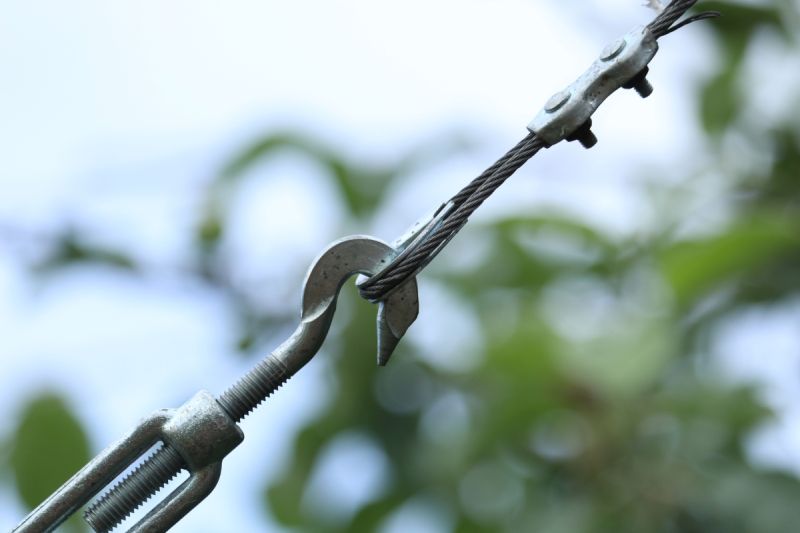
Tree service professionals of Vancouver, British Columbia explain the rationale behind tree cabling and bracing.
Strengthening Healthy Trees Though Support Cabling
Throughout the ages, trees have been symbols of strength and longevity. Trees such as red cedars, oaks, and giant redwoods are all types of trees that have stood both in the minds of people and in the physical world as examples of endurance and the power of nature. As humanity spreads across the world, building structures and creating their own form of order, sometimes trees become hazards that struggle to carry the heavy weight of their own branches. This is why arborists have developed a support system for trees known as cabling or bracing which keeps the tree heavy and sturdy while protecting the people and properties that surround it. This article will discuss the whys and wherefores of this unique arboricultural tree training method.
What is Tree Cabling and Bracing?
Trees grow in such a way that they get the most benefit from the sun. This is sometimes inconvenient for the human constructed structures around them. Tree service companies often use tree trimming or tree pruning to accomplish the task of protecting both tree and property, but sometimes that is either unnecessary or not recommended.
Cabling is the use of either rope or steel cable to create a support for certain branches on a tree. Bracing, using rods, is also done to the trunk or large branches.
There are two types of support systems: static and dynamic. Static systems are those made of cable or rods and are drilled directly into the tree. These provide stronger, longer-lasting support, while dynamic support with rope allows a bit more for the natural movement of the tree.
Reasons for Cable Support Systems
If a tree is in a dangerous position in relation to a home or other building, even a mild storm or moderate winds can cause damage. Cabling is often used as a preventative measure for vulnerable branches.
This method can only be done on healthy trees, because trees that are full of pests or tree disease will merely continue to decline and the support system may not work at all.
Reasons for a tree to have a cable support system installed are:
- Healing: Cabling can help a tree heal cracks from storm damage or other harmful scenarios.
- Prevention: It can keep damage from happening to heavy branches and keep them from falling and damaging property or injuring people.
- Co-Dominant Branches: This is a spot on the tree where two large branches meet. It is also called a V-crotch because it shapes what looks like the letter V. It can be a vulnerable point for a tree, especially an older and larger one.
- Leaning Trunk: If the root system of a tree has been affected or the soil around the tree has changed, a tree can begin to lean. Bracing or cabling can provide a stable foundation for the tree to grow again.
A Guide to Tree Cabling
A certified arborist should be the one performing a cable installation after a thorough tree risk assessment.
The steps they will likely follow in installing a static support system are listed below.
- Decide the location of the cables and support branches.
- Drill holes for the cable.
- Thread the cable through the holes.
- Cap the cable and tighten it.
- Adjust as needed.
- Remove excess cable.
- Inspect annually.
About VI Tree Service
For more than 30 years, VI Tree Service has proudly provided excellent tree care for the entire Vancouver, BC area. We offer 24 hour emergency response and affordable pricing. Call today for a quote.

